If asked to highlight a single figure from the Hungarian baroque period, most Hungarian would simply reply Pázámány. Born in Nagyvárad (present-day Oradea, Romania) the Archbishop of Esztergom lived in several cities: Kolozsvár (Cluj-Napoca, Romania), Krakow, Rome Vienna, Graz, Nagyszombat (Trnavam Slovakia). Buda and Pest cannot be listed among these, as they were still occupied by Ottoman forces during the prelate's life.
However, while Pázmány never visited the city, he is revered in the capital as well. His statue once stood on Ferenciek Square opposite to a statue of Werbőczy. The pair symbolised the two pillars of historical Hungarian society: the secular or worldly and ecclesiastical power.
The statues of István Werbőczy and Péter Pázmány on the former Apponyi Square in front of the two Klotild Palaces (Source: Endre Liber: Budapest szobrai és emléktáblái [The statues and memorial plaques of Budapest])
Péter Pázmány was born in Nagyvárad on 4 October 1570. At his birth his family was Protestant, and Pázmány converted to Catholicism during his student years in Kolozsvár. he joined the quickly growing Jesuit order in 1587. He served his monastic probation in Krakow, and studied philosophy in Vienna, and later, theology in Rome.
He quickly became a supervisor in the Jesuit school of Graz. From here he moved to the court of the Archbishop of Esztergom, Ferenc Forgách, which was in Nagyvárad at the time, rather than the Ottoman-occupied Esztergom. In 1608 he represented the Jesuits at the national diet held in Pozsony (Pressburg, now Bratislava, Slovakia). In 1616 the Pope released him of his monastic vows and named him successor to Ferenc Forgách. He was created a cardinal in 1629.
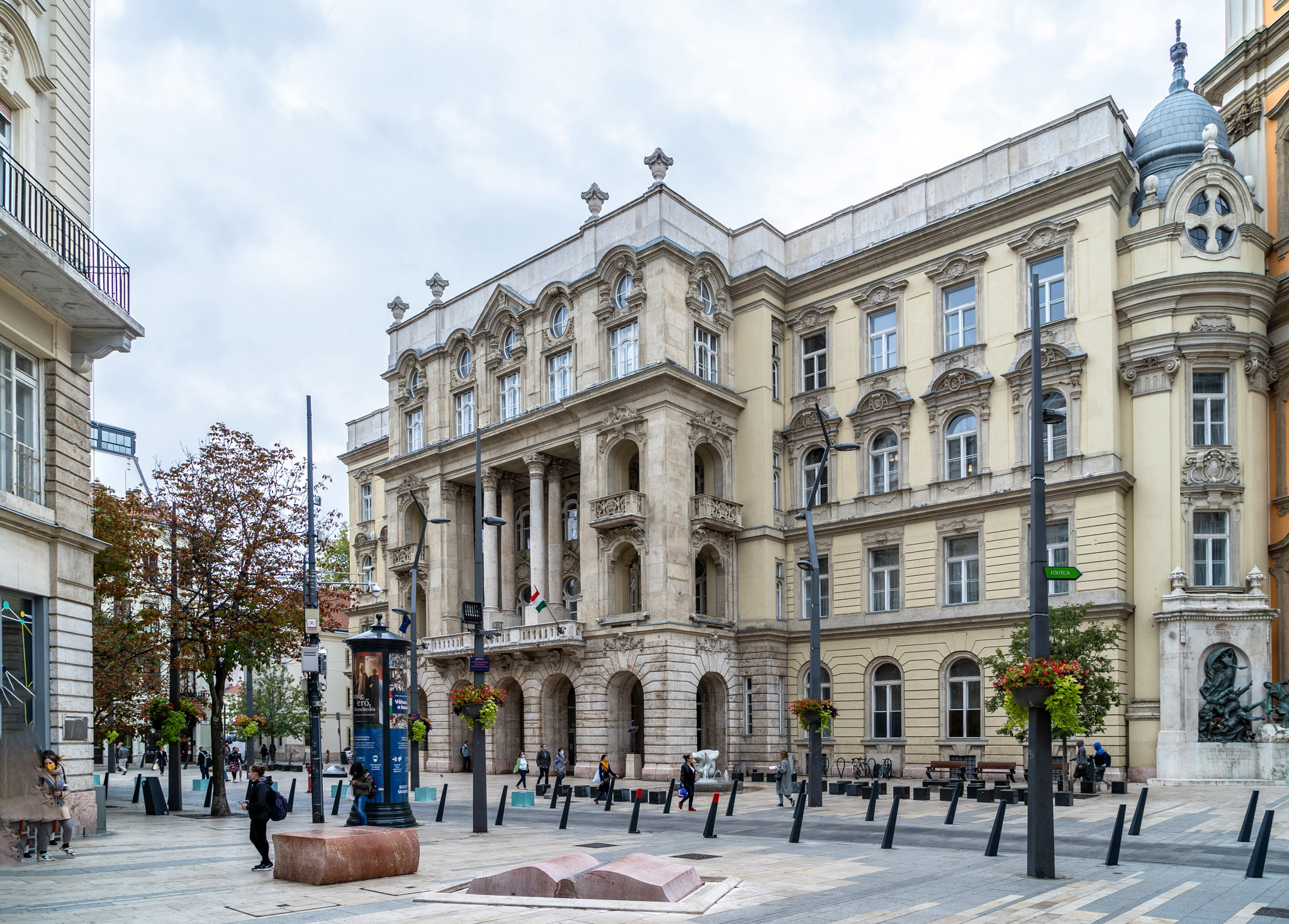
Péter Pázmány founded the university that today bears the name of Loránd Eötvös and operates in Budapest in 1635 in Nagyszombat. The main building of the University stands on University Square in the 5th District (Photo: Balázs Both/pestbuda.hu)
The Cardinal became the leading figure of the Catholic renewal in Hungary. His debates and speeches are among the fundamental works of Early-modern Hungarian literature. His written works and baroque eloquence raise Pázmány among the leading figures of Hungarian literature. His decision to found the University of Nagyszombat in 1635 is a deed that influences Hungarian culture to the present day. The University was moved to Buda in the following century by order of Queen Maria Theresa, and today operates as Eötvös Loránd University. Pázmány passed away on 19 March 1637, ages 66.

A plaque commemorating the founder of the University in the Main Building of Eötvös Loránd University (Photo: Balázs Both/pestbuda.hu)
The earliest examples of Pázmány's remembrance in Budapest are connected to the University. In 1777 decreed that it be moved to Buda, and in 1784 Joseph II moved the four faculties to Pest.
The official name of the institution became Royal Hungarian University. It was commonly referred to as the University of Pest or Budapest. From 1921 it was renamed Hungarian Royal Pázmány Péter University. A statue of the Cardinal was even erected in the central hall of the main building in 1925. The central figure of the three-figure statue by György Vastagh the Younger depicted Pázmány sitting down. Two students stood either side of the Cardinal symbolising the Faculties of Theology and Philosophy that had been created in Nagyszombat.
The statue by György Vastagh the Younger was erected in 1925 (Photo: Élet, 28 November 1926)
The 7 June 1925 issue of Magyarság reported on the unveiling of the statue:
"The Pázmány Péter University of Budapest has erected an ornate bronze statue of its founder Cardinal Péter Pázmány in its central hall. The statue was unveiled in a solemn ceremony this morning. The hall was filled with the respectable, including the Council of the University and its faculty."
Aladár Zubriczky, rector, greeted those attending, and prof. József Siegescu, Chairman of the Sculpture Committee, recounted the details and history of how the statue had been erected. Aladár Zubriczky then accepted the statue in the name of the University.
The bronze work was a truly historical statue, which evoked baroque pomp and circumstance powerfully. Erected in a closed space, the statue – although not extremely large – become monumental.
The name of the institution was changed to Eötvös Loránd University in 1950, and the state socialist regime had the statue removed. It was believed lost for a long time, but was found in 1990 and can today be seen on the Piliscsaba campus of the Pázmány Péter Catholic University. This latter university today houses the legal successor of the Faculty of Theology that Pázmány created in Nagyszombat in 1635. The Catholic University adopted the name of the Archbishop in 1992, while the other faculties of the University continue to operate within the state university that bares loránd Eötvös's name.
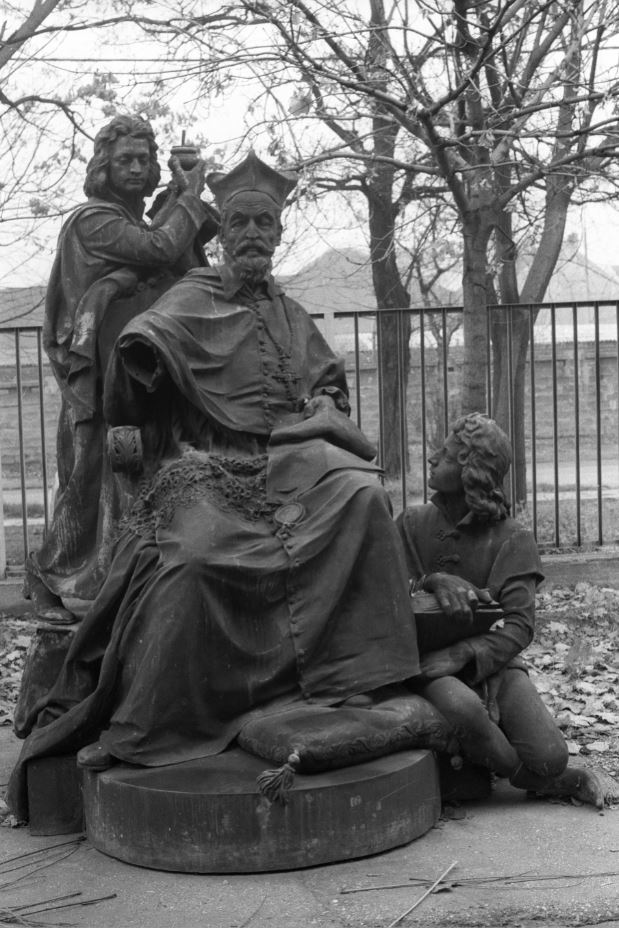
The three-figure statue of Pázmány in Sülysáp in 1990 (Photo: Fortepan/No.: 76466)
When the statue in the University was erected, another representative statue of the prelate stood on Apponyi Square (today, Ferenciek Square) not far from the university building. The history of the so-called 'ten royal statues' is relatively well known. In 1897, King Franz Josef sent a rescript to Prime Minister Dezső Bánffy regarding the erection of ten statues in Budapest, which would be donated to the public spaces of the capital by the King.
The royal rescript even named the ten historical figures to be depicted by the statues. Pázmány was one of those named, and his sculpture was the last to be unveiled in 1914. The erection of the statue was hindered by landscaping difficulties, and the symmetrically placed statue of Werbőczy had been standing for years by the time Pázmány was placed opposite him.
On 19 August 1914, the Budapesti Hírlap wrote about the statue and the role Pázmány played Hungarian culture:
"It will be a great joy to see how the Hungarian public look up to Pázmány, putting denominational differences aside. Today, no one can be hurt by the fact that we had a Péter Pázmány, whose statue now stands opposite to that of Werbőczy – another great Catholic. However, neither can be judged through the eyes of religion."
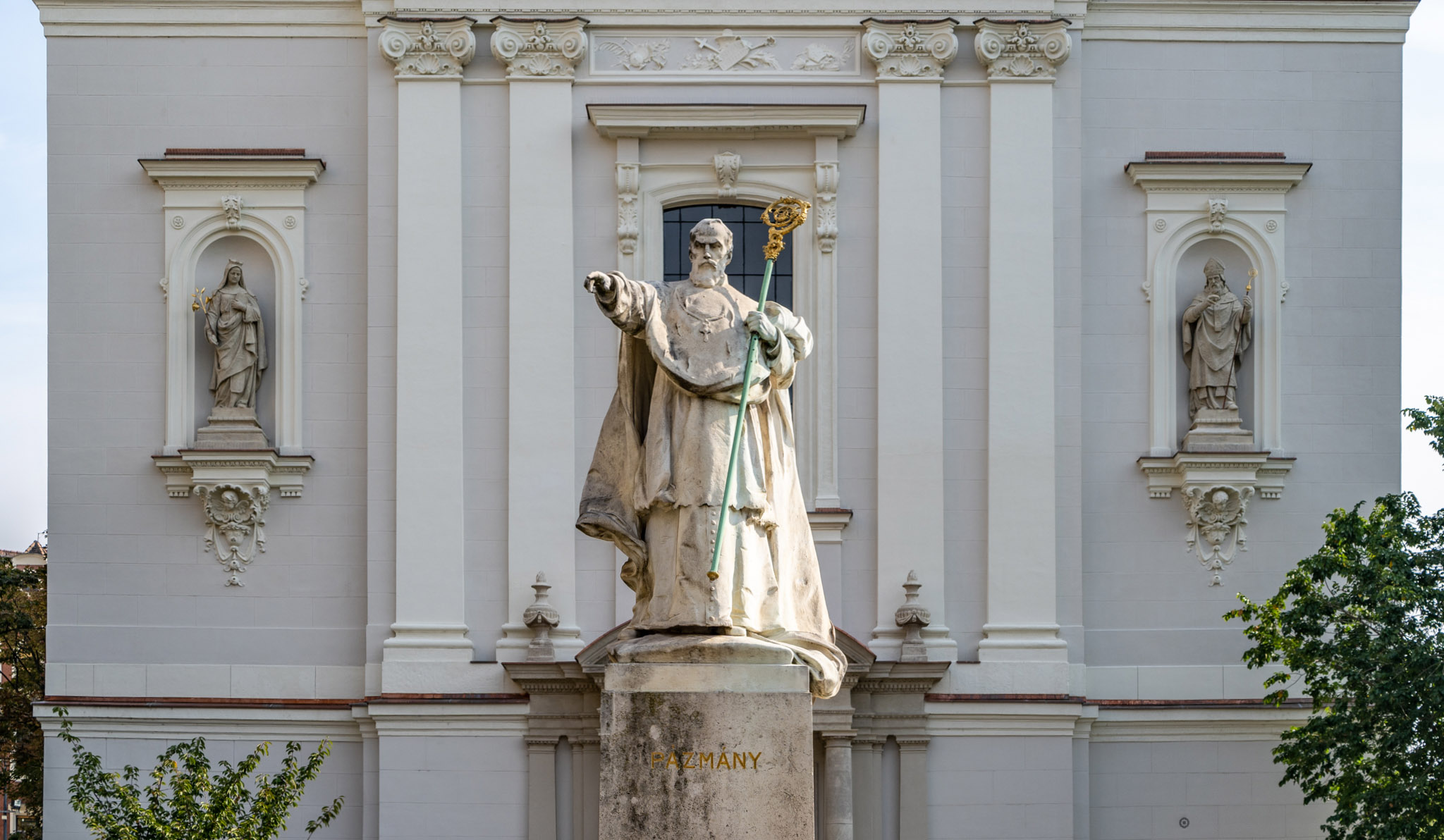
The statue by Béla Radnai was the last of the ten royal statues to be erected in 1914. Today the statue stands on Horváth Mihály Square in the 8th District, before Saint Joseph's Church (Photo: Balázs Both/pestbuda.hu)
The unveiling on 20 August 1914 was solemn: "The unveiling of the statue was planned to be a great national celebration, but the war has sidelined these plans for now. Alfréd Drasche-Lázár presented the statue in the name of the Prime Minister, Ministers Office, and dr. Ödön Wildner, councilman, accepted the statue in the name of the city" – wrote the Budapesti Hírlap of the event.
The statue depicts Pázmány as a dynamic, strong figure. His left hand holds a shepherd's staff, as he worked to protect and better his flock. His pose also holds something of the more militant debater and orator, in an attempt to express what his letters and spoken words once conveyed.
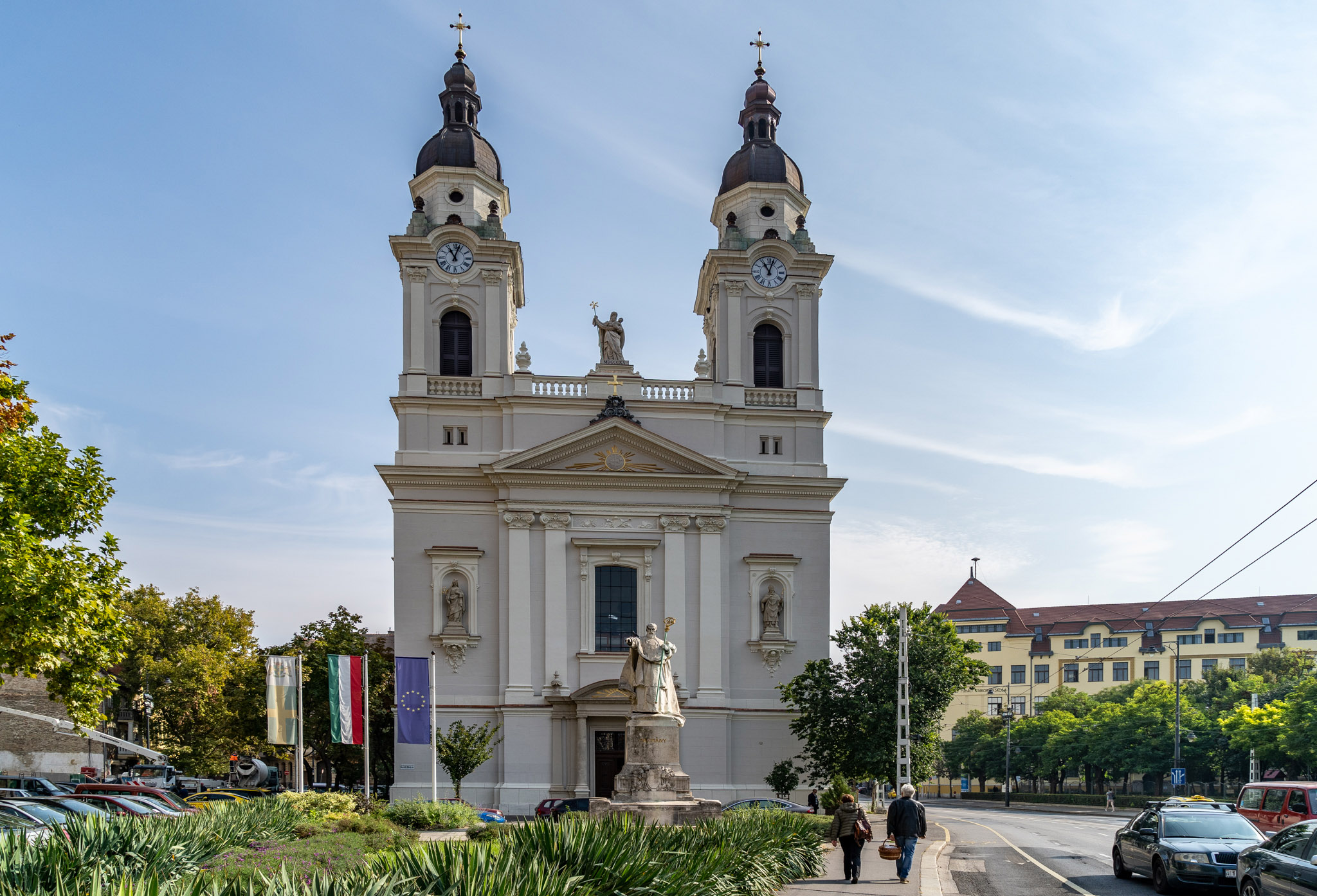
The statue of Péter Pázmány stands in front of the recently renovated 8th District Parish Church (Photo: Balázs Both/pestbuda.hu)
The statue was left in its place for several years after the war, while the statue of Werbőczy was destroyed in 1945. The City Council only voted to move the statue in 1958. The decision reflects Pázmány's status in Hungarian culture. The council most likely was unwilling to destroy the statue because of Pázmány's central role in Hungarian literature but thought it better that it stand in front of a church due to his being a priest.
The newest public statue of Pázmány in Budapest can be found under the arches of the University's central building on University Square. The sculpture by István Buda was unveiled on 9 May 2014 as part of the traditional Pázmány Day celebrations held by the University.
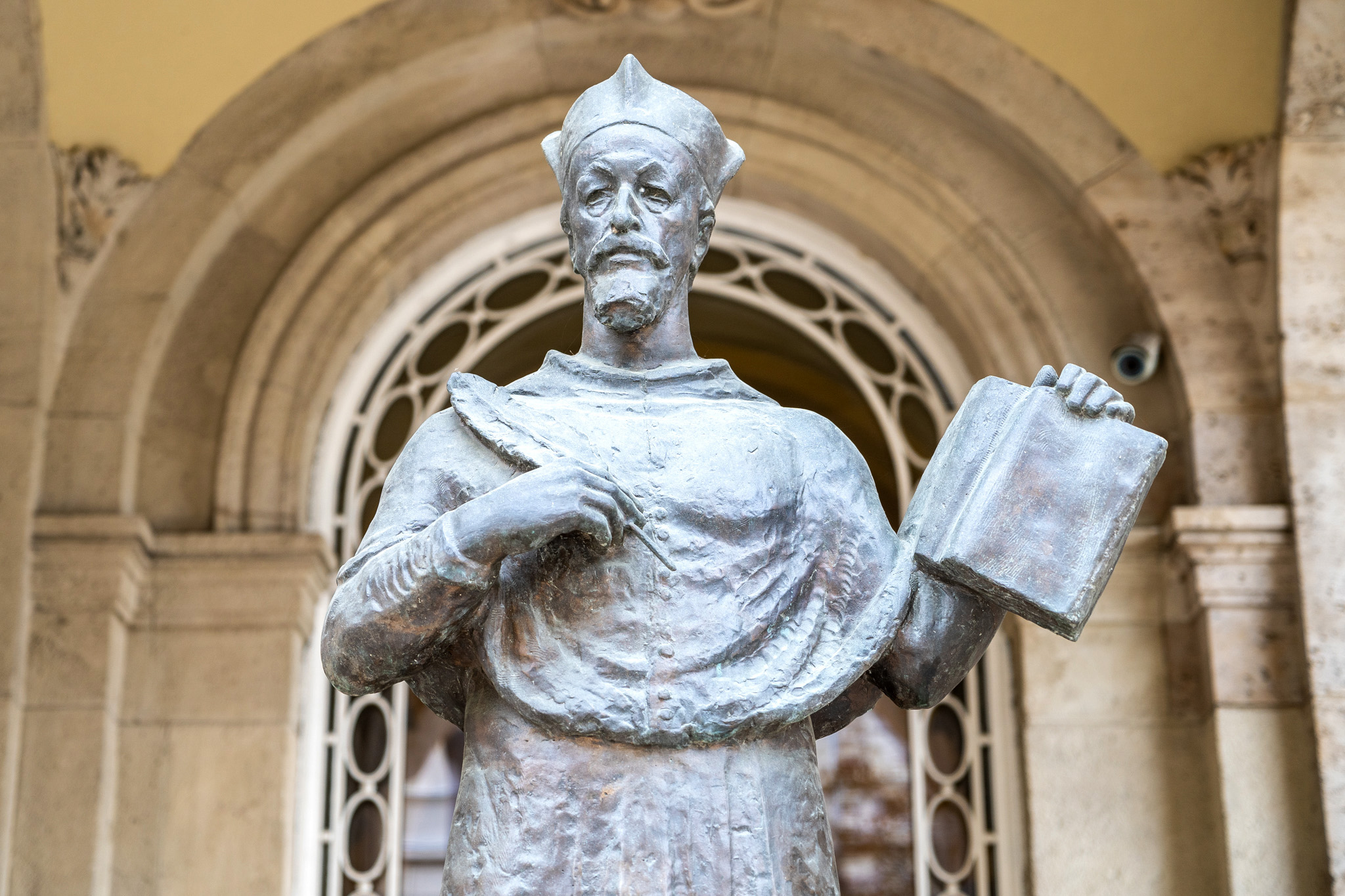
The statue of Pázmány by István Buda (Photo: Balázs Both/pestbuda.hu)
The statue presents a different Pázmány to those above. As contemporary art often aims to do, the depiction is more everyday. Regardless, it does not demystify the figure. An academic, a university founder, and a writer appears holding a book and a pen. Interestingly this statue also has a 'pair', as a statue of Loránd Eötvös was erected under another arch in 2016.
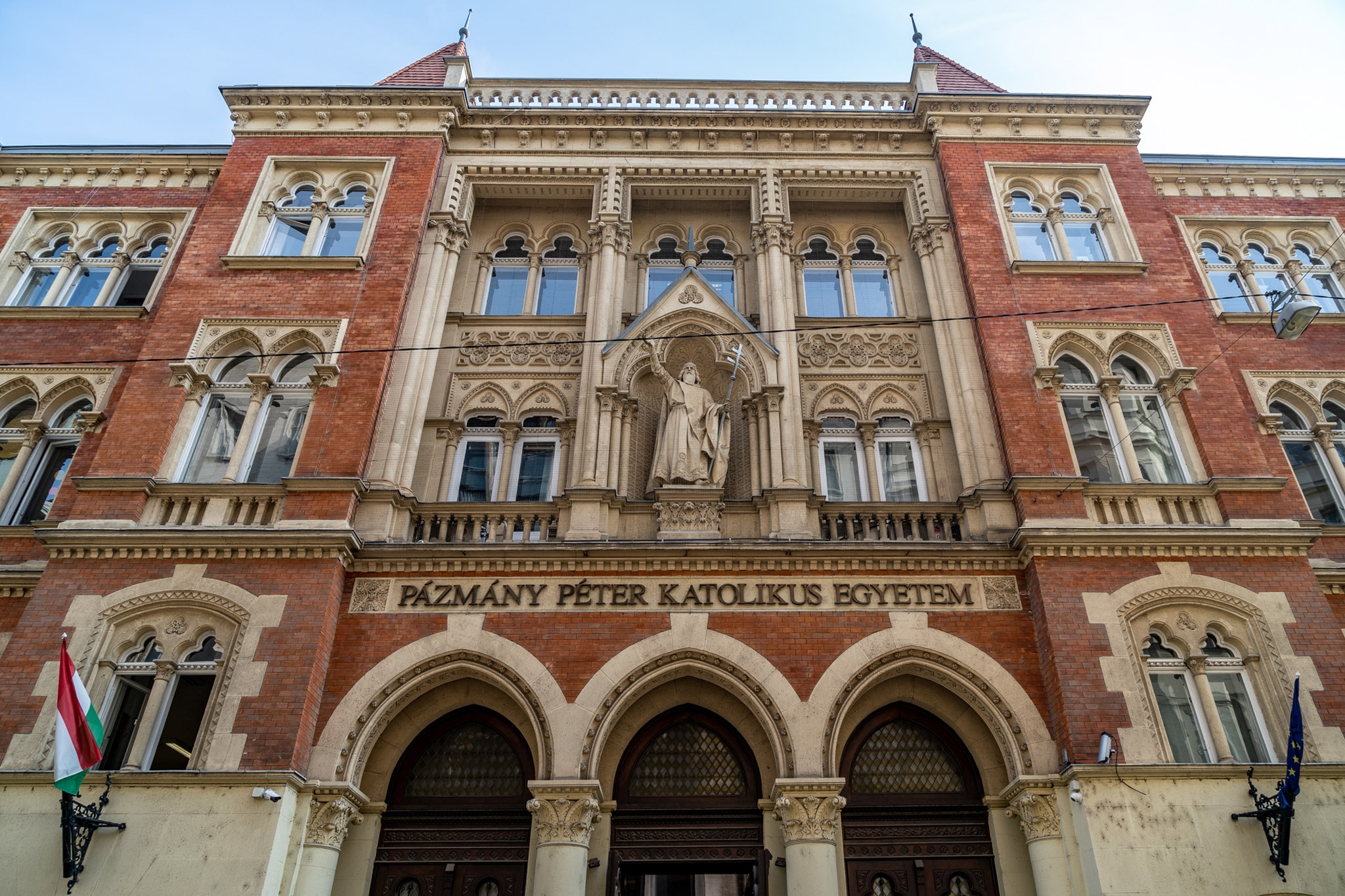
The central building of Pázmány Péter Catholic University under 28 Szentkirályi Street in the 8th District. A statue of Saint Stephen stands on the façade as the building was once the headquarters of the Saint Stephen Society (Photo: Balázs Both/pestbuda.hu)
Smaller monuments to the Archbishop can be found throughout Budapest. Not far from University Square the Péter Pázmány Pharmacy has housed a bust since 1928. The central building of Pázmány Péter Catholic University in Szentkirályi Street also contains a relief by Tibor Reiger unveiled in 2001, which depicts Pázmány wearing a Galero.
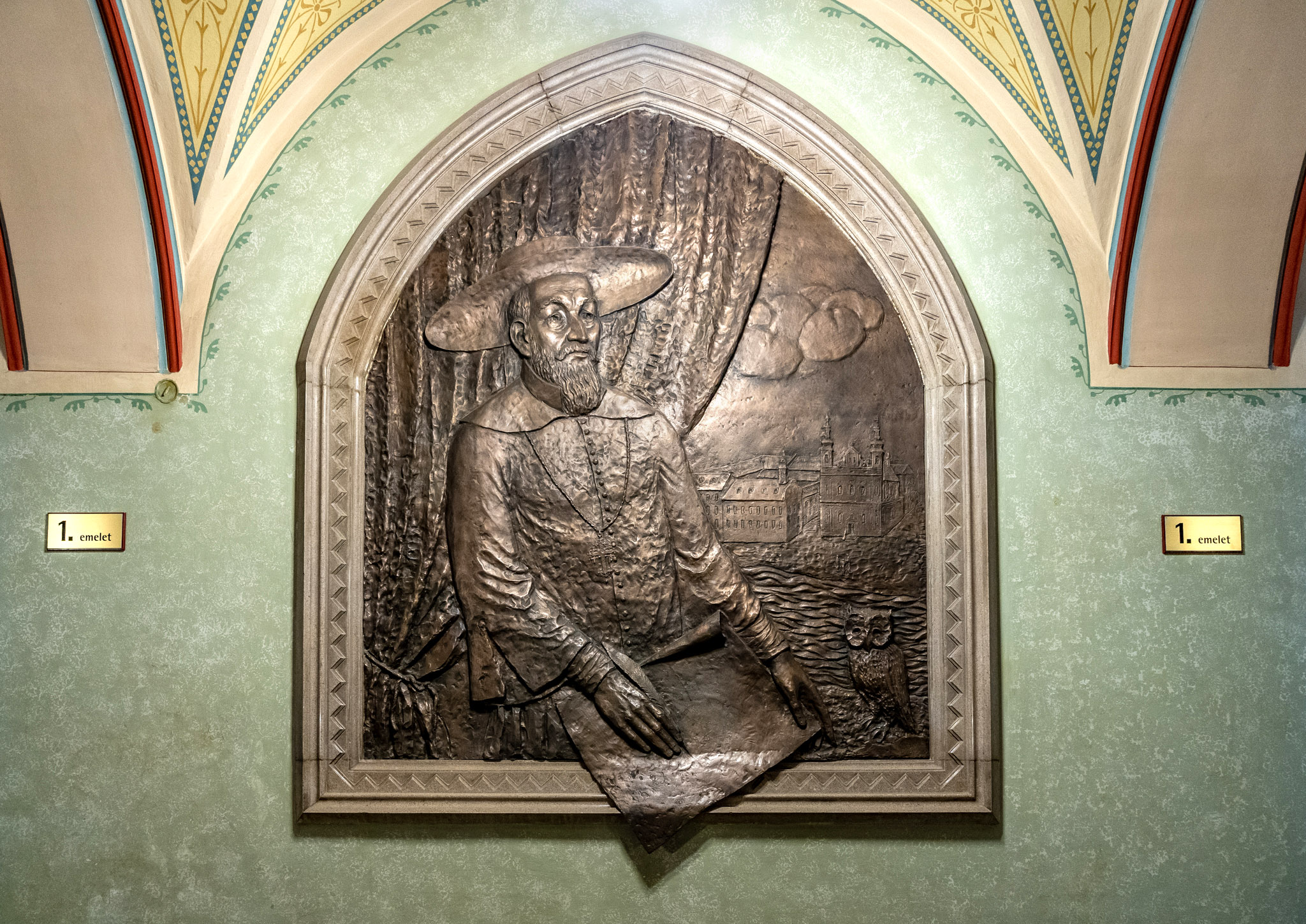
The relief by Tibor Reiger in the building of Pázmány Péter Catholic University (Photo: Balázs Both/pestbuda.hu)
Beyond the monuments to Pázmány above, a street also bears his name in Budapest. The former Mezőhegyes Street in the 15th District, a major route through the area, was named after the prelate in 1992.
The remembrance of Pázmány in Budapest highlights how he continues to symbolise Hungarian unity to the present day. The baroque Cardinal's heritage belongs to all Hungarians, his work was conducted beyond the borders on modern Hungary, as Nagyvárad (now Oradea, Romania), Kolozsvár (present-day Cluj-Napoca, Romania), Nagyszombat (now Trnava, Slovakia) and Pozsony (currently Bratislava, Slovakia) have been parts of neighbouring countries since the Treaty of Trianon was signed.
Cover photo: The statue of Pázmány on Horváth Mihály Square in the 8th District (Photo: Balázs Both/pestbuda.hu)

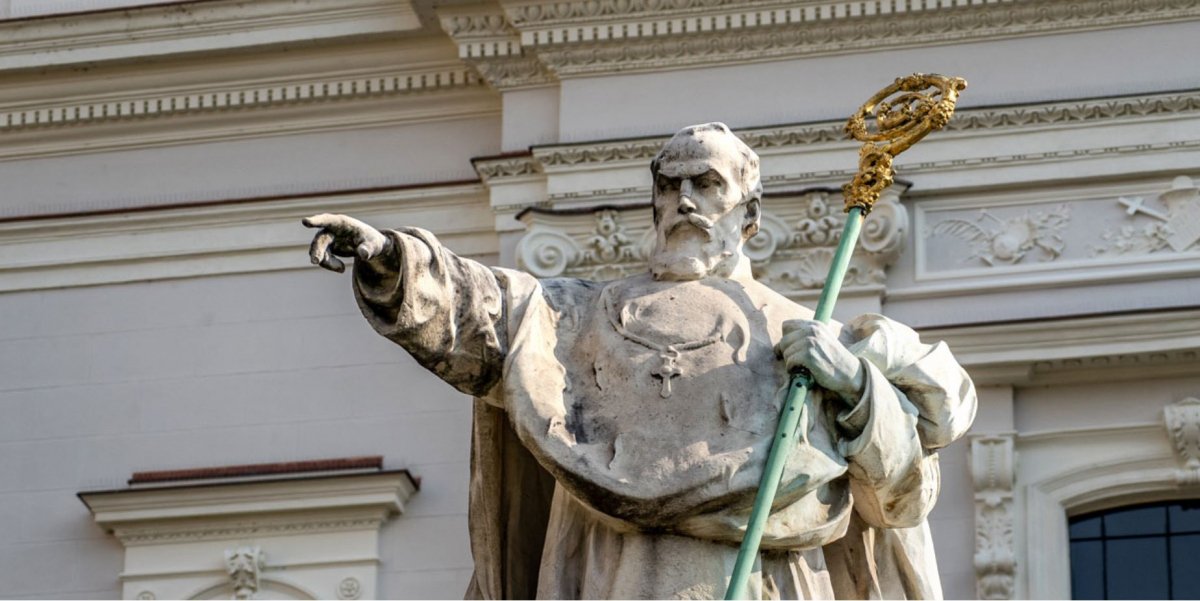



































Hozzászólások
Log in or register to comment!
Login Registration